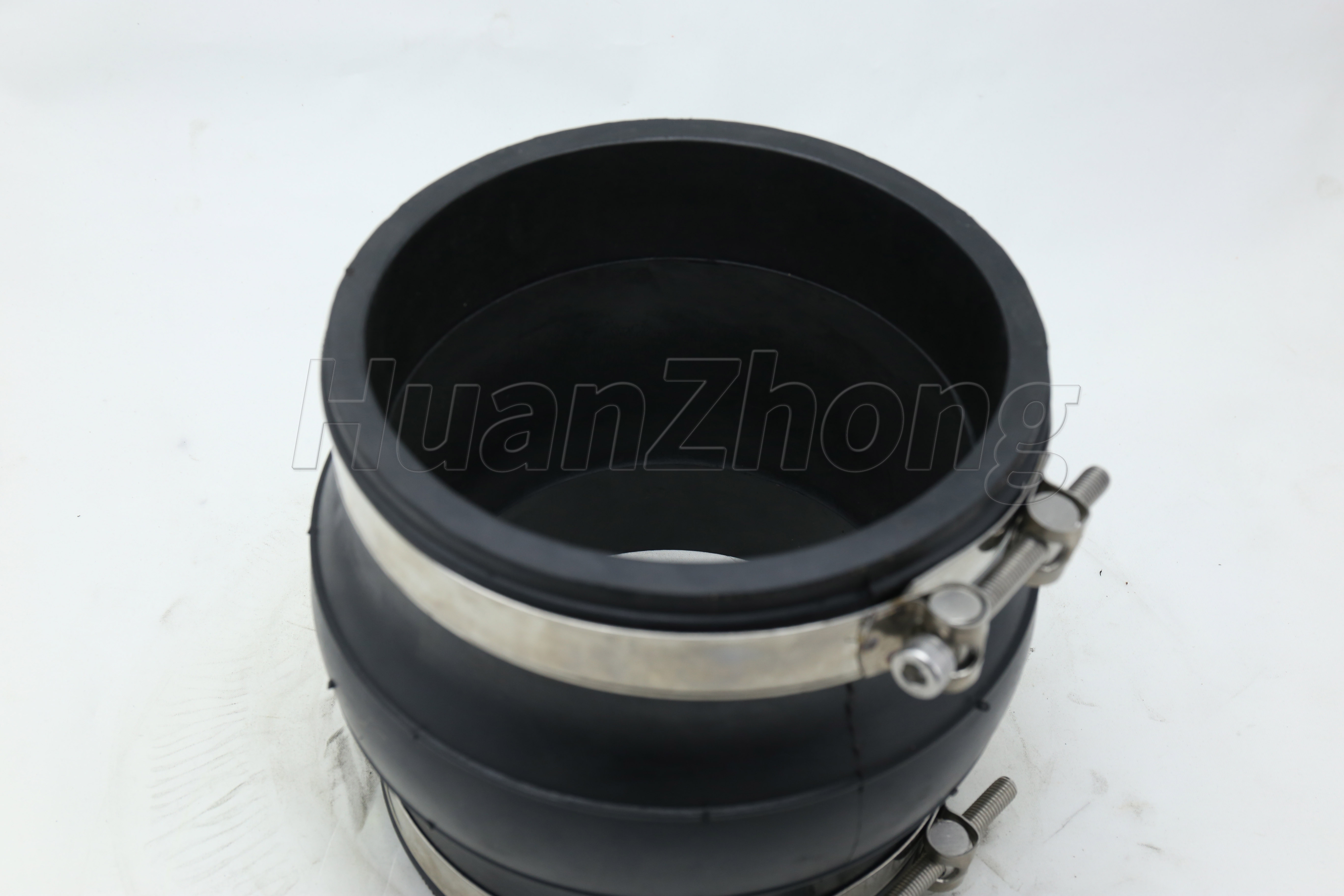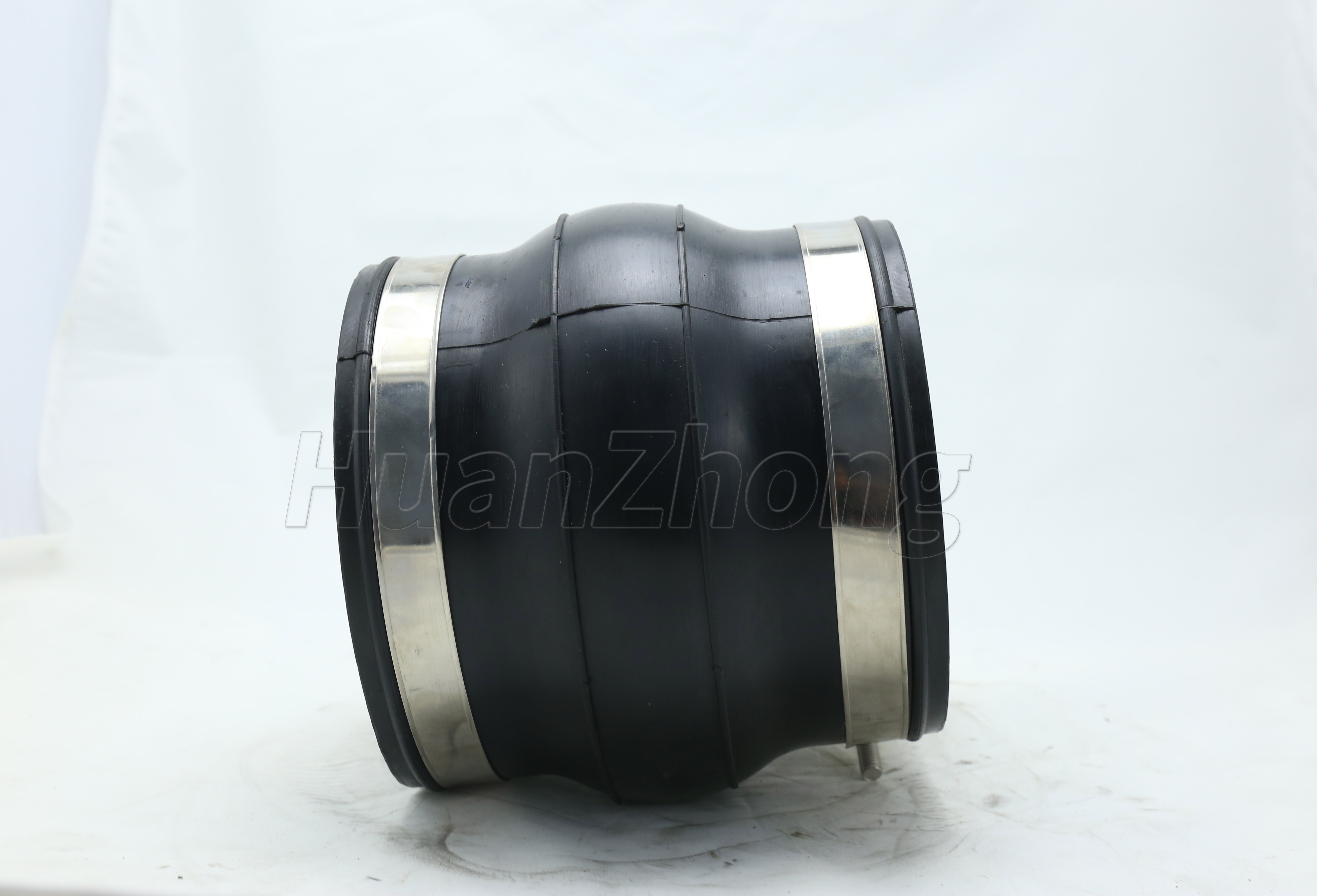Introduction of KRHD clamp type flexible joints
Clamp type flexible joints are used in all walks of life. What are the specific classifications of rubber joints?
Classified by internal form: single ball rubber joint, double ball rubber joint, three ball rubber joint, reducer concentric rubber joint, reducer eccentric rubber joint, clamp rubber joint, 90° rubber elbow, etc.
I. Clamp type flexible joints implement GB8259, GB8260, GB8261 standards. Composition of clamp type flexible expansion joint: outer card, sealing ring, inner card connector, fastening bolt.
II. Features of clamp type flexible joints: 1 . The working condition of the clamp is equivalent to a pressurized container, the axial force of the medium is completely borne by the clamp, and the bolt only bears the radial force of the clamp. Due to the limited width of the seal, the radial force is much smaller than the axial force. When the flange is connected, the bolt bears all the axial force and the compression force of the gasket.
2 . Good self-sealing role, sealing role by the media in the pipe on the compression force of the rubber ring, the greater the pressure, the better the sealing performance. In order to prevent the leakage of media without pressure, the inner diameter of the rubber ring should be smaller than the outer diameter of the pipe end interface, the rubber ring has a preload on the end pipe interface, which can prevent the media from leaking out when there is no pressure. Compared with the flange, the larger the diameter of the pipe, the higher the pressure, the more prominent the advantages.


3 . The pipe connection is in a flexible state, there is a gap between the clamp and the pipe end, and the pipe can have a small amount of movement in the clamp. Therefore, the two adjacent end pipes are allowed to have a certain corner. After the steel pipe is connected, there is a gap between the two steel pipe ends, which allows the pipeline to move axially and can adapt to the expansion and contraction of the pipe; the rubber ring connection between the pipes can effectively reduce the mechanical vibration by more than 70%.
Third, the installation method of clamped flexible joint: when the pipe needs to be flipped, only a few bolts of the joint need to be removed to flip any angle without cutting and welding, saving a lot of auxiliary workload and cost, reducing labor intensity and shortening the construction period. Compared with flange connection, it can improve the work efficiency by 6-8 times, and the workload of maintenance is very small.

